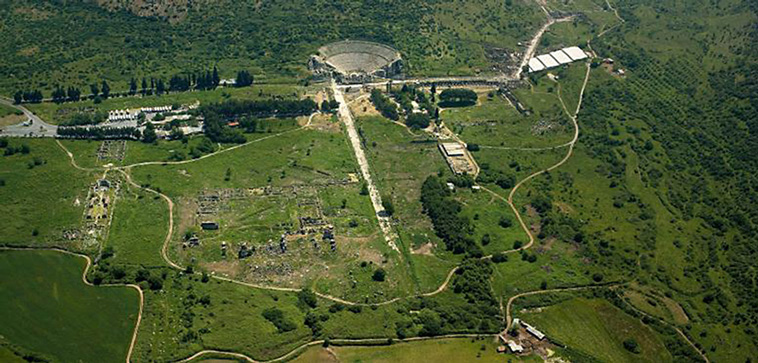The city of Ephesus was built in the 10th century BC on the site of the former Arzawan capital by Attic and Ionian Greek colonists. Ephesus was one of twelve cities that were members of the Ionian League during the Classical Greek era. The city was famous in its day for the nearby Temple of Artemis, which was one of the Seven Wonders of the Ancient World. Its many monumental buildings included the Library of Celsus and a theatre capable of holding as many as 24,000 spectators.
Temple of Hadrian in Ephesus
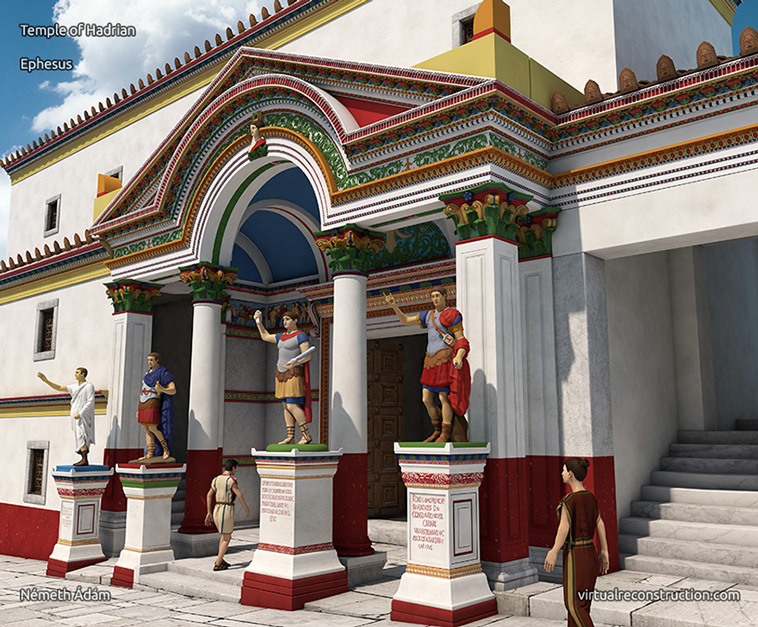
Temple of Hadrian today
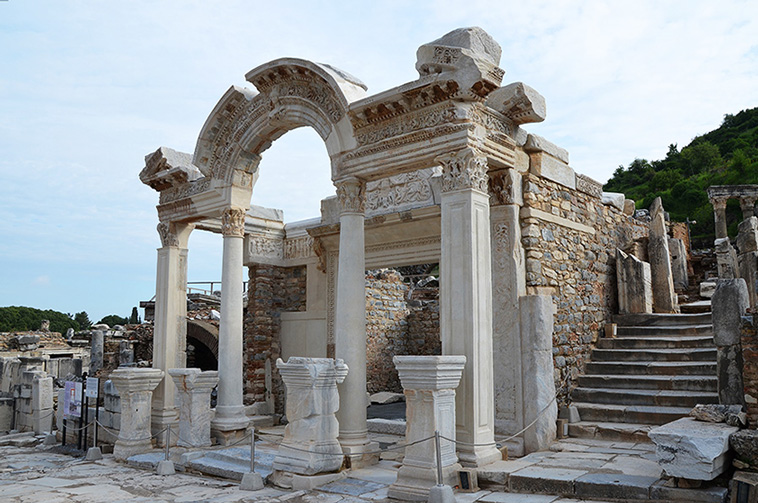
The city became a subject of the Roman Republic in 129 BC. After that, in 27 BC, Ephesus was the capital of the province of Asia. The city became the second largest city in the empire after Rome, living its heyday in the 1st and 2nd centuries AD. There were approximately five thousand people who live in Ephesus. It was the golden days of Ephesus, in other words, it was the era of wealth and abundance. The city was the center of attraction; every year almost a million people used to come to Ephesus for large-scale celebrations. For example, there were many baths and public buildings. Moreover, the city’s plumbing system was the most developed in the ancient world. The city further enhanced its role in trade to the extent that at a certain point it was considered the bank of Asia Minor.
Nymphaeum Traiani
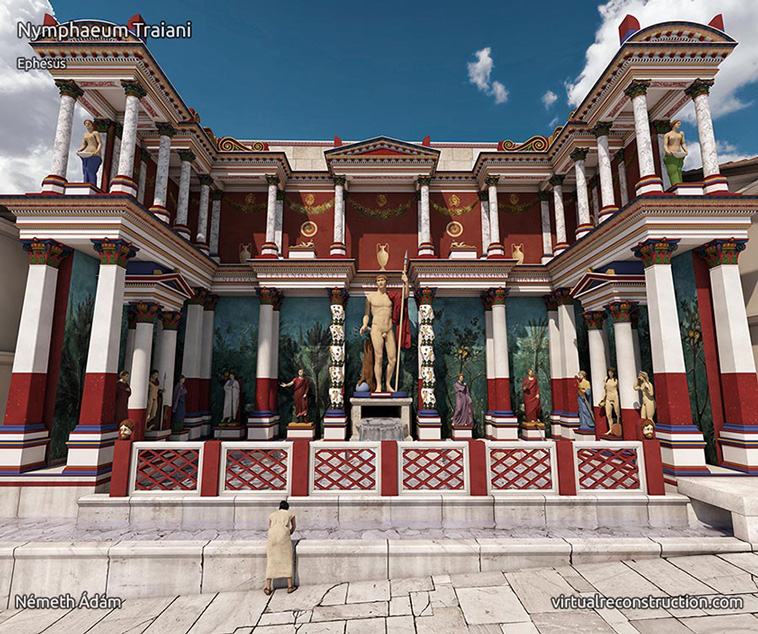
Nymphaeum Traiani today
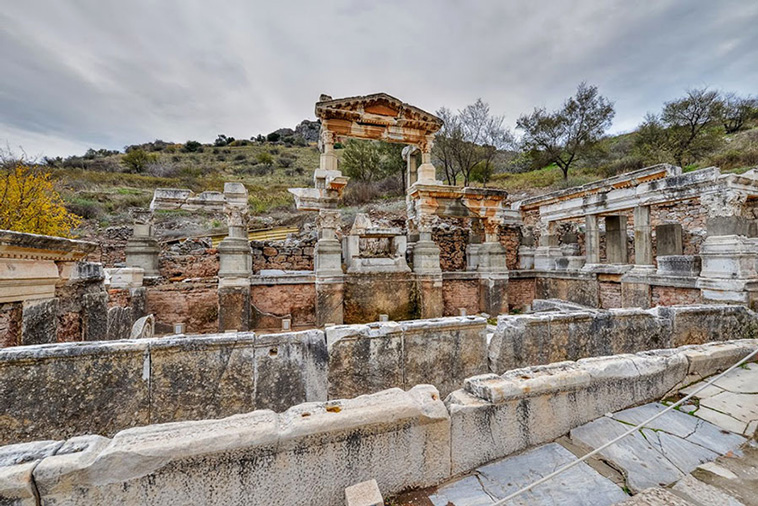
Hungarian illustrator Ádám Németh created 3D renderings of what the ancient Greek city of Ephesus most probably looked like in its golden days. Thanks to Németh’s researchings, which he benefited from references and reviews of sources found online, in libraries and in museums, and also ongoing discussions with archaeologists, this remarkable work appeared.
“I have been dealing with Roman-era reconstructions since 2009, initially focusing on Aquincum, Sopianae,” Németh told Earthly Mission. “In 2016, I was approached by the Spanish publisher Tecam who were looking for a reconstruction specialist for National Geographic’s book series on ancient cities. I was given Ephesus.”
Temple of Artemis
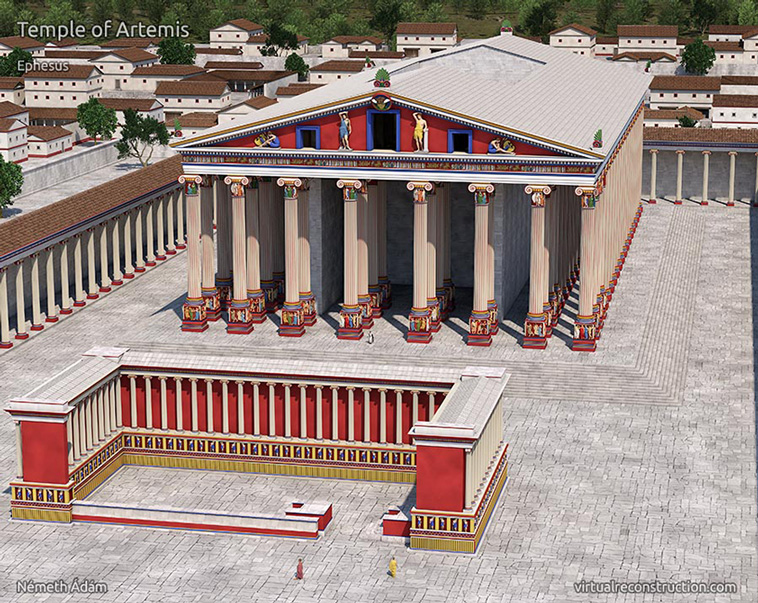
Németh adds ‘I made a 3D model of several locations using photogrammetry to make the reconstruction more accurate. The missing details were determined on the basis of my knowledge of Roman architecture and culture. Such is the question of paintings and decorations, as pigment tests have not yet been carried out on sculptures and buildings, but we do know that they were painted in bright colors. No one knows exactly what the decorations were like, I’m presenting a likely possibility,’
The Site of the Temple of Artemis Today
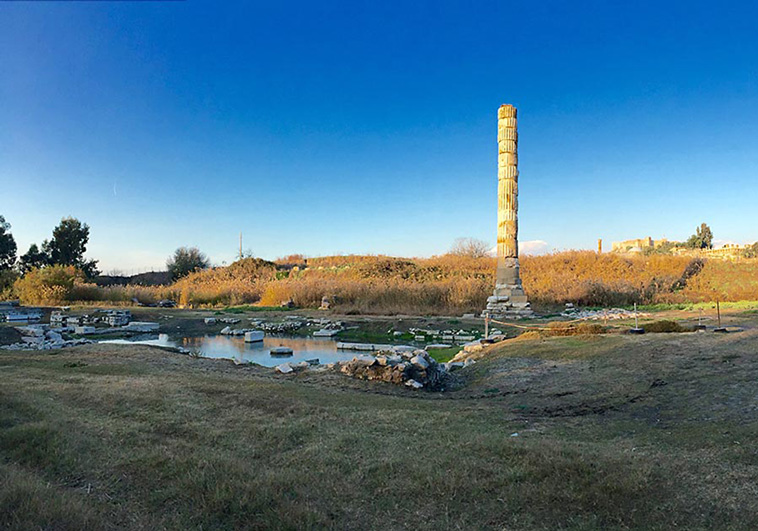
Curetes Street, a busy central street in Ephesus
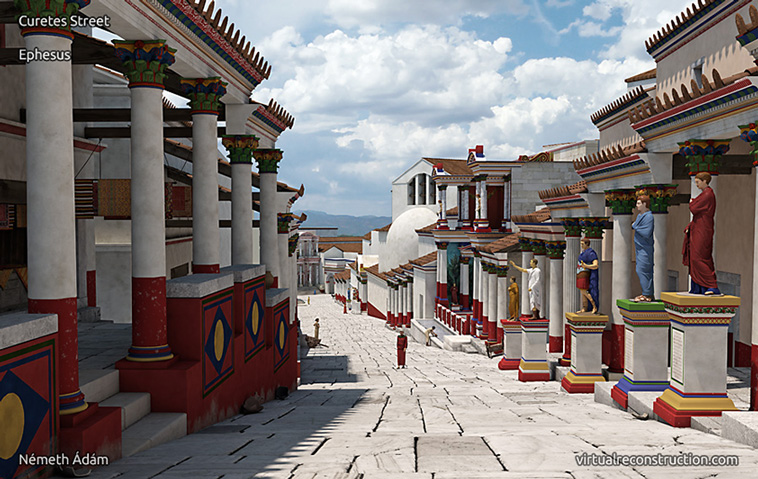
Curetes Street today
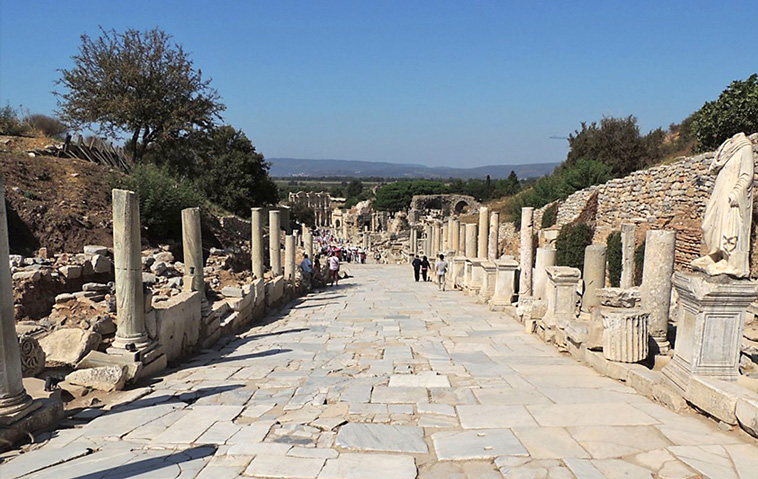
Library of Celsus
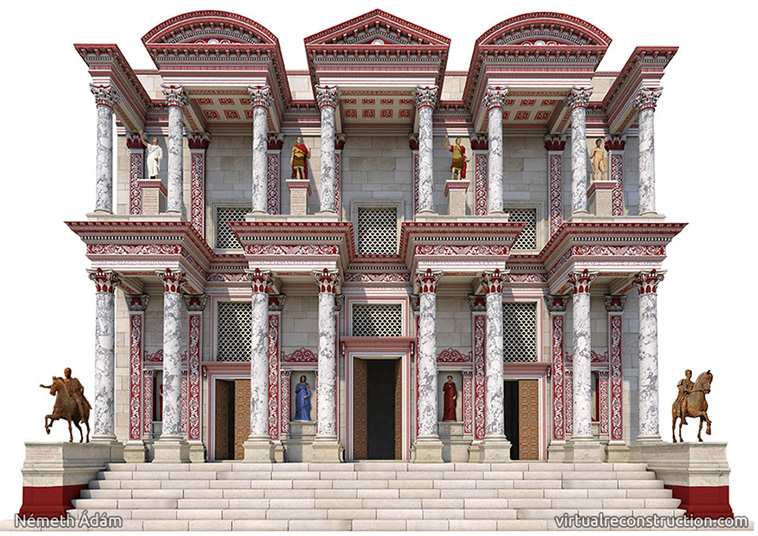
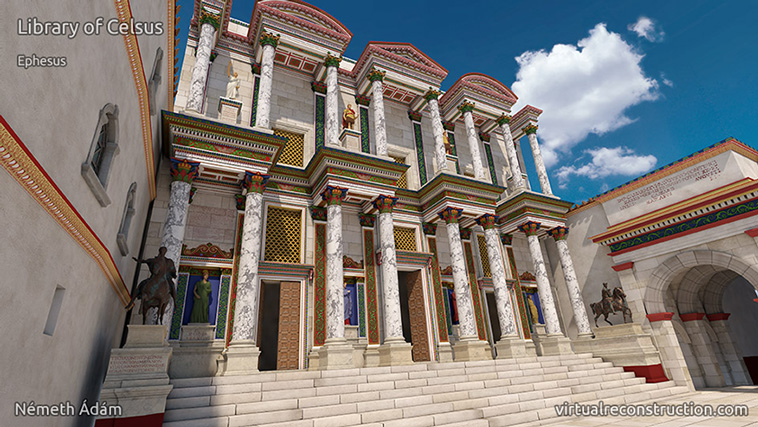
Library of Celsus today
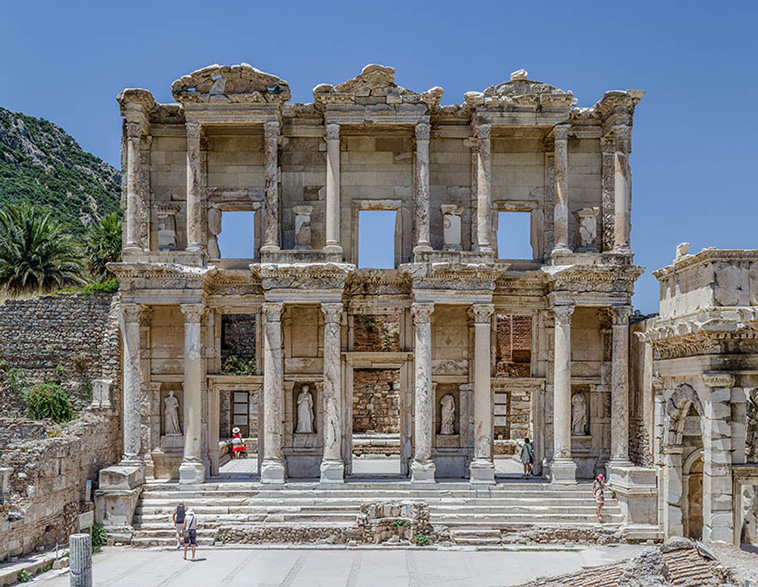
House of a very rich family
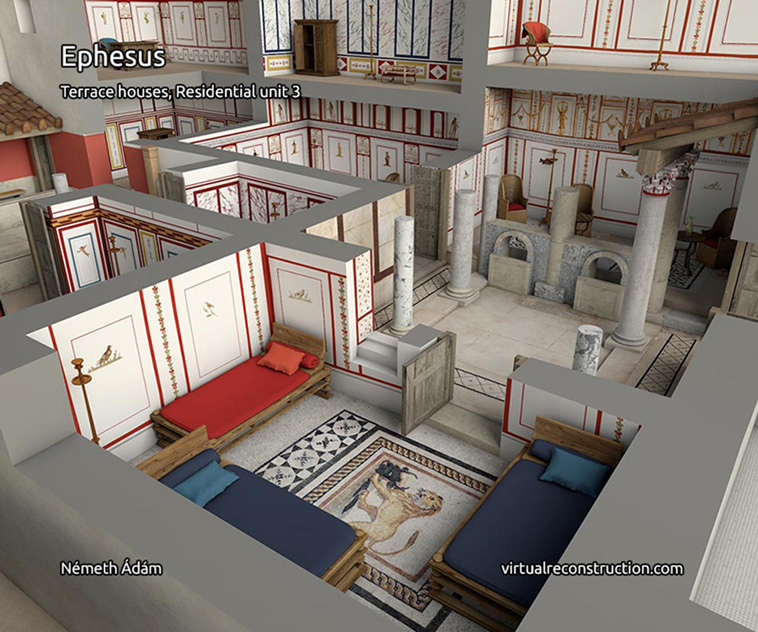
The same house today
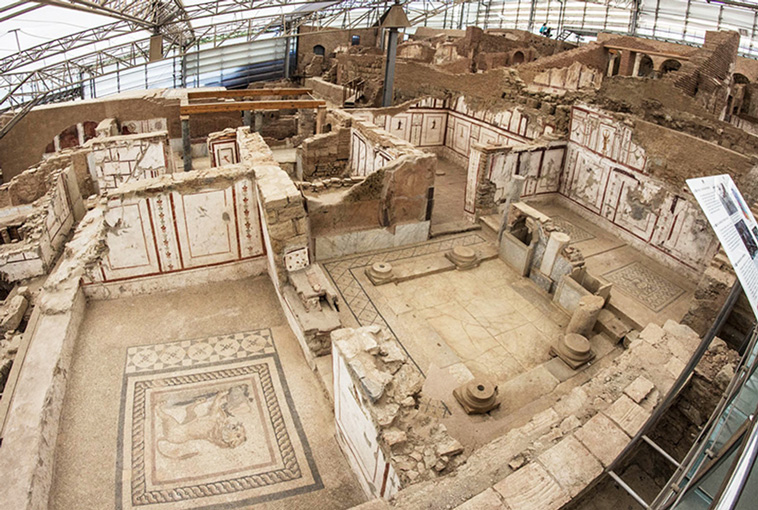
The theater in Ephesus
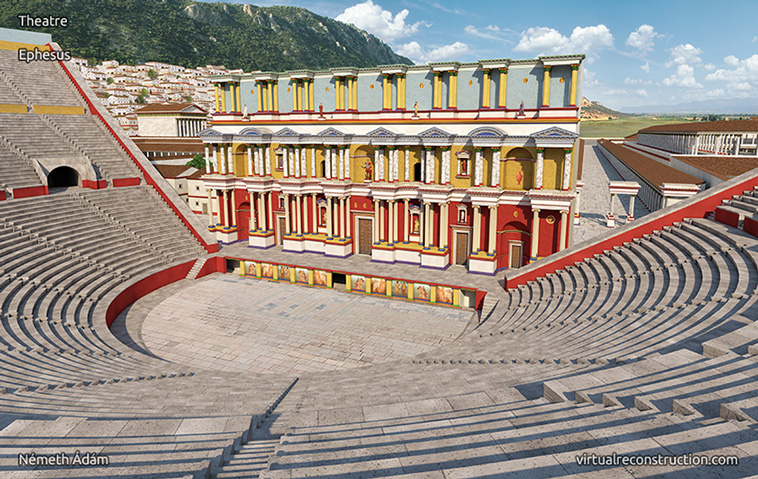
The theater today
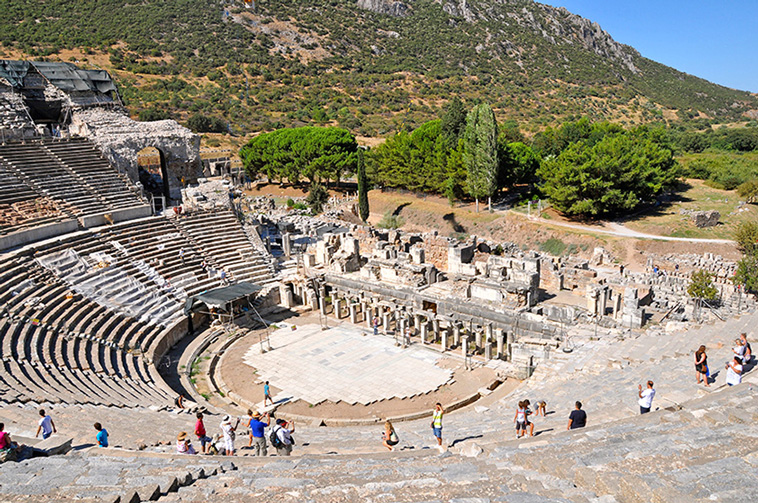
Memmius monument
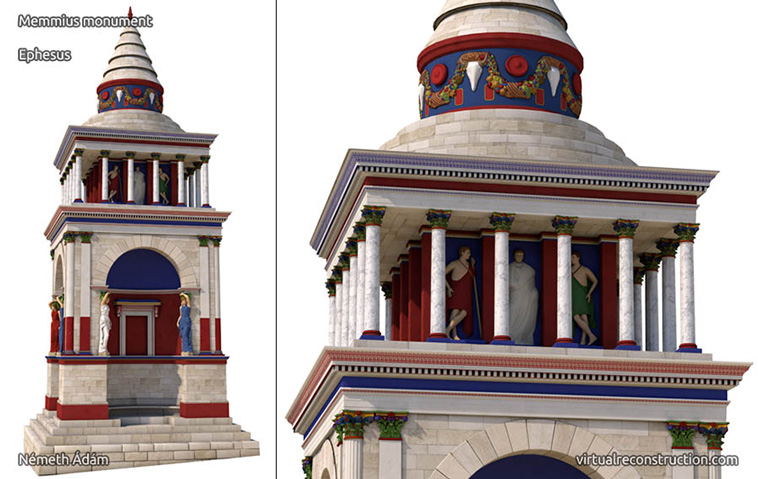

The Memmius monument today
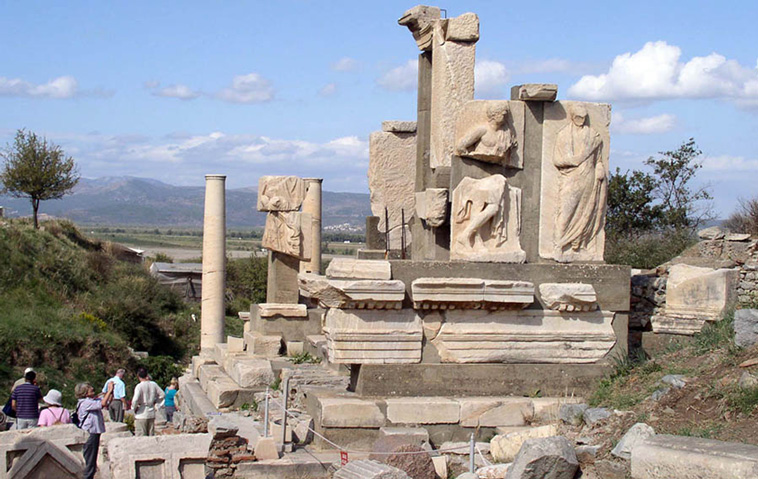
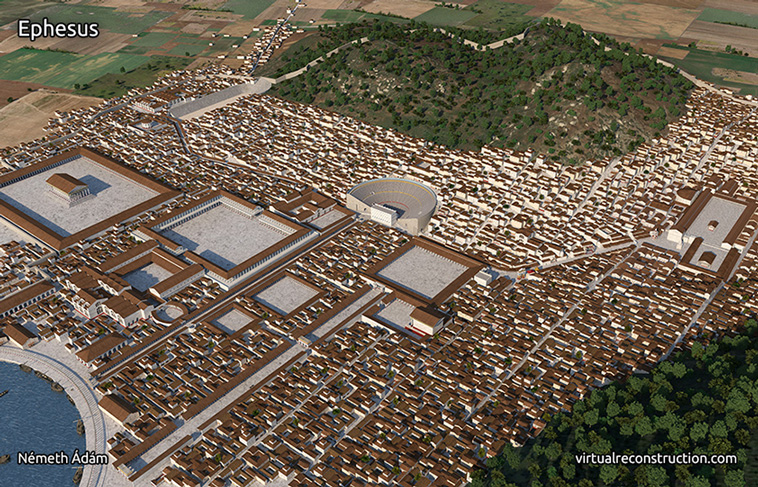
And here’s what remained of it…
